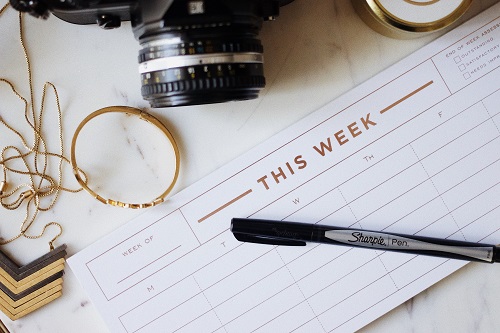Personal Productivity Hacks for the New Professional
By Allison McWilliams (’95), Ph.D., Assistant VP, Mentoring and Alumni Personal & Career Development, Wake Forest University
Anyone who is new to the working world will quickly learn that your time, and your ability to manage it effectively, are two key strategies to success. Unlike when you were in school, no one at work is necessarily going to tell you what to do, how to do it, and when to make it happen. Being a “professional” means taking responsibility for your own work, and figuring out how to get it done in a timely fashion to meet or exceed expectations. But how do you figure out how to do that, when you haven’t had to do it, previously?
First, it’s important to figure out what works for you. For example, some people like to keep a continuous running list of things in a bound notebook, while others prefer to do that work on their phone or tablet. Adopting someone else’s style when it doesn’t work for you will not make you more effective or efficient. Second, when it comes to managing time and priorities, it’s important to get clear on expectations with your supervisor. Without question he or she will have preconceived ideas of how long projects or assignments should take, and what’s considered priority work. If your supervisor doesn’t have this conversation with you, then you should be sure to bring it up in your next one-on-one meeting. And third, recognize that this is all part of the learning process, and it’s going to take time and a bit of trial and error. Watch what other people around you do, and take notes. Try out different tools and strategies and see what works for you. But give yourself some grace that it’s not all going to go smoothly right out of the gate. One of the most important aspects of being a young professional is learning how to be a young professional. Do the work and it will pay off.
Here are a few of my favorite strategies for staying on task and getting things done the right way.
- Calendars. Whether you use an online or a paper version (I’m a paper girl, myself, but also maintain an online calendar as required through work), use your calendar to your advantage. Schedule work project time in advance and identify critical deadlines. Put work holds and honor them to make sure that your time doesn’t get lost to endless meetings (note: do this with discretion. No one loves the co-worker who blocks out 5 days a week as “unavailable.”). Work your calendar like a to-do list and cross off items as they get accomplished so that you can identify progress towards your goals. If possible, go through your calendar at the beginning of the year and block out any anticipated vacation days so that both you and others will respect your need for personal time.
- Lists. I love a great to-do list. I love the feeling of crossing things off and the sense of organization that lists provide. What I have learned over the years is that a never-ending list is not helpful. You need a list that provides that sense of accomplishment and also doesn’t lose sight of longer-term needs or goals. I keep two separate lists. One is a daily list, which I create each day (in fact, one of the recurring items on my to-do list is always to make the list for the next day, and I make sure to do that before I leave each day). This list is always split into three sections: the must-dos, the should-dos, and the can-dos. The must-dos go at the top, and they are the things that absolutely have to happen that day. The should-dos are longer-term projects, but generally speaking are going to move up into the must-do list in the next few days. And the can-dos are the really long-term projects, which I don’t want to forget about but won’t be a crisis if I don’t get to them today. By having this list each day, when I walk in the door I don’t spend any time wandering around wondering how to spend my time.I also keep a running list of deadlines, usually about a month out, which I can refer to for that can-do list. These are things that need attention, but not immediately, and that move up the urgency scale as time passes. This list is also helpful for when I run into some unexpected down-time; I can flip over to this list and see if there’s anything I can make some headway on.
- Goals. Finally, I always keep nearby my list of goals and action items. These generally are for the year or quarter, and get reassessed at least quarterly for any needed changes. Ideally, this would be something that your supervisor would ask you to do, and would help you to create. But even if that doesn’t happen, there’s nothing stopping you from creating quarterly goals for yourself, and then sharing those with your supervisor. What are the 3-5 (tops) critical issue areas or projects that you need to work on for this quarter? What will success look like? How do these connect to the organizational or departmental mission and goals? Well-written goals and action items are just like another to-do list. You should be able to check things off as you make progress, and see movement towards reaching your goals. If not, then you need to reassess whether you are doing the right work, or if you need to change the goals.
The nice bit about all of this is how it all fits together: the goals should determine the items that go onto your long-range and short-term to-do lists. And the to-do lists should help you to create and manage your calendar. And all of it should help you to be more effective and efficient with your time and your work!

